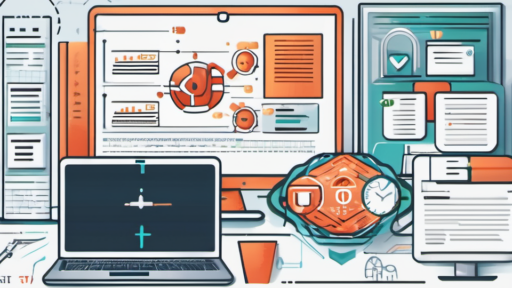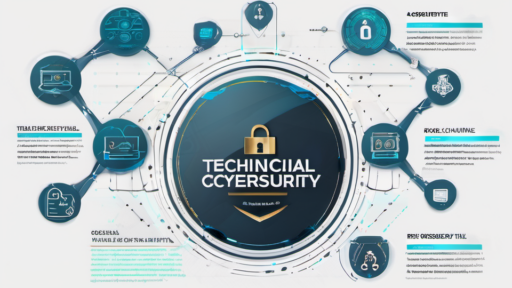You know the feeling: You wake up with a nagging worry about data security. Are your precious photos safe? Could someone be listening to your online calls? These anxieties are real, and they’re only becoming more prevalent in our increasingly interconnected world. But what if I told you there’s a new wave of tech innovations emerging that can shield you from cyber threats? Get ready to explore a future where security isn’t just a worry but a robust safeguard built into your daily life.
Revolutionizing Security with Advanced AI
Remember the old antivirus software that relied on recognizing known threats? That’s like using a flashlight to find a needle in a haystack in today’s digital landscape. The attackers are constantly evolving, devising new and complex schemes to breach our defenses. Artificial Intelligence (AI) has emerged as a revolutionary solution, capable of adapting to these dynamic threats and providing unparalleled protection.
How AI Is Changing the Cybersecurity Game
AI is rapidly becoming the backbone of robust security systems. Imagine a security system that doesn’t just identify existing threats (known vulnerabilities) but can learn and adapt to emerging security threats (zero-day exploits) in real time. This is the power of AI in action.
-
Predictive Analysis: By analyzing massive datasets and recognizing patterns, AI can predict potential threats (security vulnerabilities) before they occur, allowing for proactive measures. Think of it as your digital guardian angel, spotting trouble before it hits you.
-
Real-Time Threat Detection: AI-powered systems can analyze and detect suspicious activity in real-time, identifying threats (malware attacks) and thwarting them before they gain access to your systems.
-
Automated Incident Response: AI algorithms can analyze data, pinpoint the source of attacks, and automate the response (cybersecurity incident response plan) – faster and more efficiently than any human team. This means no more scrambling to contain damage, only quick, precise actions to minimize disruption.
Cybersecurity: The New Frontier of Privacy
You want to browse online with confidence and privacy, right? We all do! But the rise of data breaches and cyberattacks is eroding that trust. That’s where privacy-enhancing technologies come into play, enabling secure data sharing while preserving user privacy.
Breaking Down the Walls of Data Privacy
Let’s be honest: data security and privacy are more than just buzzwords. They are critical components of a secure and trusted online world. Here’s how privacy-enhancing technologies are paving the way:
-
Homomorphic Encryption: This advanced technology allows data to be encrypted even while it’s being processed. Think of it as a secret code that prevents prying eyes even during computations.
-
Differential Privacy: Imagine you want to share information about your preferences without revealing your identity. That’s where differential privacy (anonymization techniques) steps in. It introduces noise into the data, making it impossible to identify individuals while still maintaining statistical insights.
-
Zero-Trust Security: In a traditional approach, once someone is inside your network, they are trusted. With Zero Trust security, every access request is verified and granted on a need-to-know basis, effectively removing the assumption of trust.
These innovations are building the foundation for a trustworthy and secure digital world where users can confidently engage online, secure in the knowledge that their data is protected.
Beyond the Hype: How AI and Privacy Technologies Will Change Our World
The future of cybersecurity isn’t just about protecting against hacks; it’s about building a safer, more transparent online experience. Here’s a glimpse of the future we’re shaping:
A New Era of Cybersecurity
-
Hyper-personalized security: Your digital shield will evolve with you, anticipating your specific vulnerabilities and offering tailored protection based on your online activities.
-
Seamless Security Integration: Imagine a future where your smart home devices, internet-connected cars, and even your mobile phone work together to form a unified security ecosystem.
-
Automated Security Updates: Forget manual security updates; AI will continuously analyze vulnerabilities and apply security patches in real-time, keeping you one step ahead of evolving threats.
This future isn’t just a dream – it’s being built right now, thanks to the tireless efforts of cybersecurity researchers, developers, and engineers pushing the boundaries of innovation.
Key Takeaways
-
AI-driven cybersecurity is no longer a futuristic concept; it’s a reality, enabling faster, smarter, and more efficient threat detection and response.
-
Privacy-enhancing technologies (differential privacy, homomorphic encryption) are laying the groundwork for a more private and secure online experience.
-
The future of cybersecurity is not just about reactive protection, but about proactively anticipating and mitigating threats, ultimately leading to a safer and more secure online world for all.
The journey towards a truly secure future is ongoing, but one thing is clear: the combination of AI and privacy-enhancing technologies is the key to building a robust defense against tomorrow’s threats. By embracing these innovations, we are paving the way for a more secure and trustworthy online world – one that safeguards our data and allows us to thrive in the digital age.






